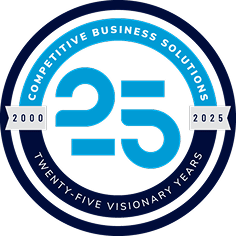
Reviving a Culture of Problem-Solving: Tools and Techniques for Effective Root Cause Analysis
In today’s fast-paced, high-pressure business environment, it’s all too easy for organizations to slip into a perpetual state of firefighting. When problems arise – and they inevitably will – the knee-jerk reaction is often to hastily apply a Band-Aid solution and move on to the next crisis.
While this approach may provide temporary relief, it does nothing to address the underlying causes. In fact, it can actually exacerbate issues in the long run, as unresolved problems continue to crop up and consume ever-increasing amounts of time and resources.
The antidote to this reactive, symptom-focused mindset? Reviving a true culture of problem-solving within your organization. One where employees at all levels are empowered and equipped to dive deep, identify root causes, and implement sustainable countermeasures.
It’s a shift that requires a concerted, holistic effort. But the payoff can be transformative – not only in terms of improved operational efficiency and reduced costs, but also in cultivating a more engaged, proactive, and solutions-oriented workforce.
So where do you begin? Here are some essential tools and techniques to help you build a culture of effective root cause analysis:
1. 5 Whys
One of the foundational problem-solving methodologies, the 5 Whys technique encourages users to iteratively ask “why” to peel back the layers of a problem and uncover its fundamental causes. By repeatedly questioning the “why” behind each observed issue, you can often trace the problem back to its root source.
The beauty of the 5 Whys is its simplicity. It doesn’t require complex statistical analysis or specialized software – just a curious mindset and the willingness to dig deeper. The key is to avoid making assumptions and to keep an open mind as you systematically work through the problem.
2. Fishbone Diagrams
Also known as Ishikawa diagrams, fishbone diagrams provide a structured visual framework for identifying and organizing the potential causes of a problem. By mapping out the various factors – materials, methods, machines, people, measurements, and environment – you can more easily see the interrelationships and pinpoint the root issues.
This technique is particularly useful for complex, multi-faceted problems where there may be numerous contributing factors at play. The visual nature of the fishbone diagram helps teams collaborate, share insights, and arrive at a more holistic understanding of the problem.
3. Process Mapping
When dealing with process-related problems, process mapping can be an invaluable tool. By documenting the step-by-step flow of a given process, you can more easily identify areas of waste, inefficiency, or potential failure points.
Process mapping exercises often uncover hidden complexities, bottlenecks, and disconnects that may have been invisible to individual contributors focused solely on their own tasks. This broader, end-to-end perspective is crucial for pinpointing the true root causes of process-oriented problems.
4. A3 Thinking
Pioneered by Toyota, the A3 problem-solving methodology provides a structured, seven-step approach to defining, analyzing, and resolving complex issues. The “A3” refers to the standard paper size used to document the process, which encourages teams to synthesize their findings concisely and visually.
The key elements of the A3 approach include clearly defining the problem, analyzing the current state, proposing countermeasures, and establishing an action plan for implementation. This disciplined, data-driven framework helps ensure that problem-solving efforts are focused on the right issues and lead to sustainable solutions.
5. Gemba Walks
While the previous tools focus on the analytical side of root cause analysis, the gemba walk emphasizes the importance of direct observation. By physically going to the location (the “gemba”) where the problem occurs, you can gain invaluable insights that may be missed in the conference room.
Gemba walks encourage you to engage with frontline employees, examine processes in real-time, and immerse yourself in the actual work environment. This hands-on approach often reveals hidden complexities, uncovers unseen waste, and sparks new ideas that may have been overlooked in a more detached, theoretical analysis.
Cultivating Success
Ultimately, reviving a culture of problem-solving requires a multi-pronged approach. It’s about equipping your teams with the right tools and techniques, to be sure. But it’s also about cultivating a mindset of curiosity, collaboration, and continuous improvement.
It’s about empowering employees at all levels to take ownership of problems, rather than deferring upward. It’s about creating an environment where people feel safe to experiment, share ideas, and learn from their mistakes. And it’s about establishing robust review processes that keep problem-solving efforts aligned with your strategic priorities.
By taking a holistic, organization-wide approach, you can transform your company from a reactive, firefighting culture into one that proactively identifies and resolves issues at their root. Your teams will be better equipped, more engaged, and more effective at driving sustainable improvements across the business.
It’s a journey, to be sure, but the payoff is immense. A culture of problem-solving doesn’t just lead to enhanced operational efficiency – it also fosters greater agility, innovation, and competitive advantage. And in today’s rapidly evolving business landscape, those qualities can make all the difference.
So don’t settle for quick fixes and Band-Aid solutions. Embrace the power of root cause analysis, and watch as your organization unlocks its full potential for long-term, systemic success.
Latest Insights
Sign up to receive our latest insights!
"*" indicates required fields




